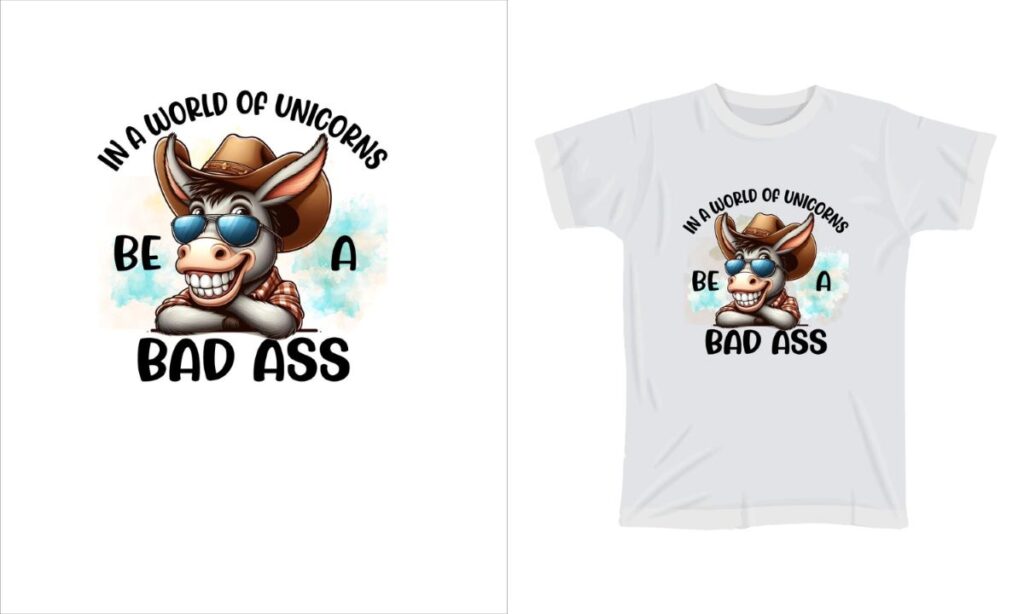UV DTF printing is revolutionizing the world of printing technology, merging the precision of UV printing with the efficiency of Direct to Film applications. This innovative approach allows creators and businesses to produce vibrant, high-quality prints on a diverse array of materials without the limitations imposed by traditional printing methods. Unlike conventional techniques that often necessitate specific substrates or complex transfer processes, UV DTF printers deliver seamless results, ensuring consistency across various surfaces. As demand for customized garment printing increases, this technology stands out by providing durability and exceptional color reproduction, making it a game-changer in the realm of personalized printing solutions. In this blog post, we will delve deeper into the advantages of UV DTF printing versus its traditional counterparts, illuminating the key benefits of this state-of-the-art printing method.
When we talk about advanced printing solutions, terms like Direct to Film (DTF) printing and ultraviolet (UV) printing often emerge in discussions about contemporary applications. These alternatives to outdated methods have garnered significant attention for their ability to cater to the growing need for customized products and efficient output. The synergy between DTF and UV technologies empowers users to innovate while maintaining exceptional print quality. As the landscape of printing continues to expand with the development of these modern approaches, it becomes imperative to understand the distinctions and advantages of such methods over traditional printing styles. This exploration reveals the transformative nature of UV DTF printing, inviting both amateurs and professionals alike to embrace the future of printing technology.
The Evolution of Printing Technology
Printing technology has transformed significantly over the decades. From the ancient art of woodblock printing to the modern digital methods we see today, the evolution has been driven by the quest for efficiency and quality. Traditional methods like offset and screen printing have long been the backbone of the industry, each offering unique advantages tailored to specific applications. However, the advent of modern printing techniques like UV DTF printing has revolutionized how businesses and individuals approach customization and production.
As we explore the benefits of new technologies, it’s important to note that traditional printing methods still hold relevance, particularly in bulk production and industries where proven practices are essential. Yet, the flexibility and innovation brought by UV printing techniques demonstrate a shift that allows for a broader range of applications, catering to markets that demand personalized and higher-quality prints.
Frequently Asked Questions
What distinguishes UV DTF printing from traditional printing methods?
UV DTF printing is distinct from traditional printing methods in that it combines the versatility of direct-to-film technology with UV printing capabilities. This allows users to print directly on a variety of materials without needing specific media, which traditional methods often require. Furthermore, UV DTF printing offers enhanced durability and vibrant colors, making it a popular choice over older techniques.
How does UV DTF printing improve customized garment printing?
UV DTF printing enhances customized garment printing by enabling direct printing on fabrics without transfers, which simplifies the process. The use of UV-cured inks also means that the prints are not only vibrant but also extremely durable, ensuring that custom designs on garments will withstand wear and frequent washing, a significant advantage over many traditional printing methods.
What are the advantages of UV DTF printing over DTF printing?
While both UV DTF and traditional DTF printing offer unique benefits, UV DTF printing stands out due to its ability to print directly on various substrates, such as glass, wood, and metal. Additionally, UV DTF inks offer brighter colors and greater durability compared to standard DTF inks, making UV DTF printing a preferred choice for those seeking high-quality results.
Can UV DTF printing be used for packaging like traditional methods?
Yes, UV DTF printing can be utilized for packaging, similar to traditional methods. As it allows printing on various materials without the need for complex transfers, businesses can efficiently create packaging solutions that are both visually appealing and durable, thus competing effectively with traditional printing methods like flexography.
What should I consider when choosing between UV DTF printing and traditional printing methods?
When choosing between UV DTF printing and traditional printing methods, consider factors such as the types of materials you plan to use, the volume of printing needed, and the specific quality requirements for color vibrancy and durability. UV DTF printing offers wider material compatibility and durability, while traditional methods may be more economical for larger volume runs.
Is it worth investing in UV DTF printing technology over traditional methods?
Investing in UV DTF printing technology can be worthwhile, especially for small businesses and hobbyists. It provides the versatility to print on various materials, produces high-quality prints, and eliminates the need for specialized transfers involved in traditional methods. However, the initial investment can be significant, so assess your printing needs and production scale before making a decision.
| Characteristic | UV DTF Printing | Traditional Methods |
|---|---|---|
| Printing Approach | Direct to film with UV-cured inks | Screen printing, offset printing, flexography, etc. |
| Material Versatility | Prints on various materials including textiles, ceramics, and plastics | Limited to specific surfaces and media types |
| Durability of Output | Highly durable and vibrant due to UV inks | May not match durability and vibrancy of UV prints |
| Production Costs | Cost-effective for small runs, less setup cost | Lower costs for large quantities with traditional methods |
| Technological Advancements | Emerging technology with innovations such as the UV Printer E1 | Established techniques with historical support and resources |
Summary
UV DTF printing represents a transformative step forward in the realm of printing technology, enabling users to harness advanced methods for their creative projects. By merging the efficiency of direct-to-film processes with the durability and vibrancy of UV printing, this method simplifies the printing process across various materials. Businesses and hobbyists alike are discovering the advantages of UV DTF printing, which offers exceptional results without the constraints of traditional methods. As the industry embraces this innovation, staying informed about UV DTF developments will equip you with the knowledge to make the best printing choices tailored to your needs.



